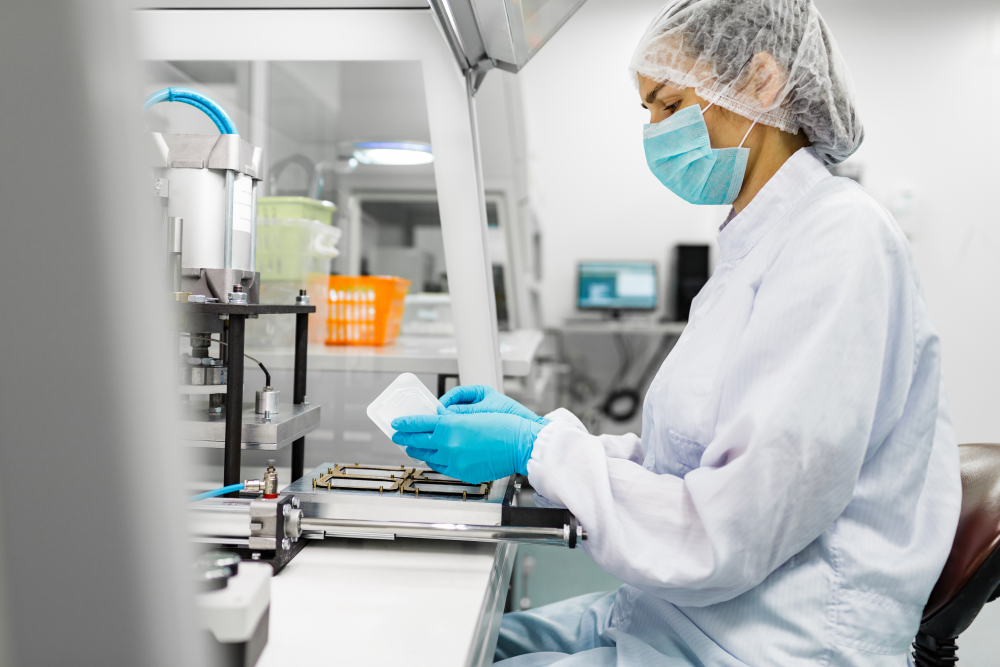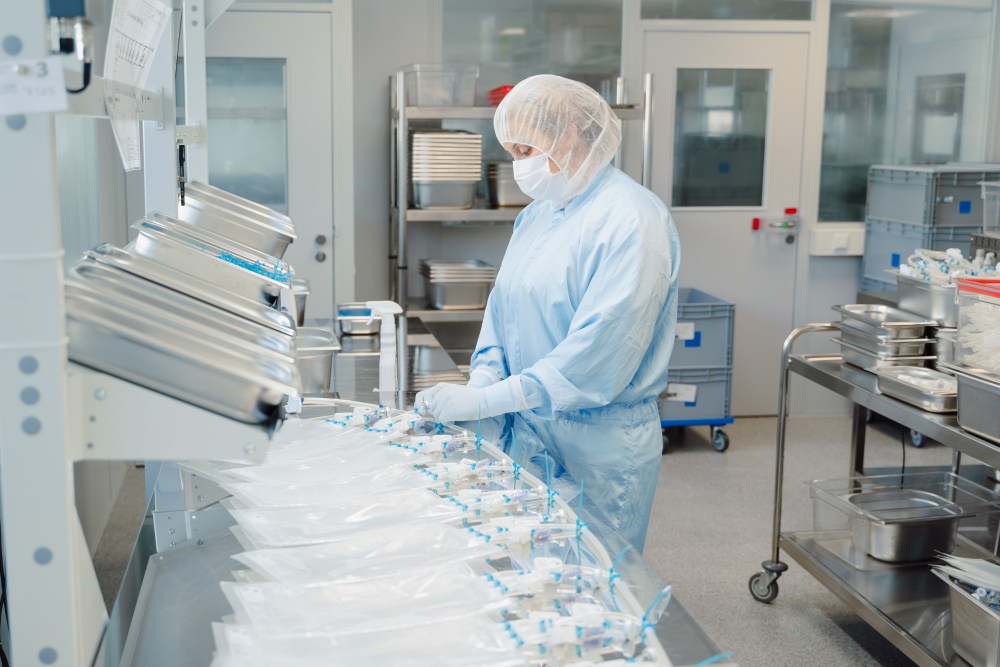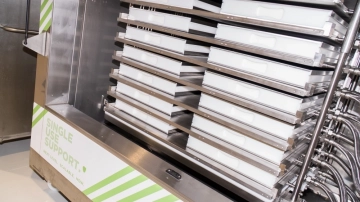RNase Contamination – Challenges & Solutions
Table of contents
ShowIn the world of biopharmaceutical manufacturing, ensuring the integrity and stability of drug products is paramount. One of the significant challenges faced by manufacturers, especially those involved in mRNA production, is RNase contamination. Ribonucleases (RNases) are enzymes that degrade RNA molecules, posing a threat to the stability and efficacy of RNA-based therapeutics. This article explores the challenges posed by RNase contamination and the solutions that can be employed to mitigate these risks.
Introduction to RNase and Its Impact
RNases are ubiquitous enzymes found in various environments, including human skin, water, and laboratory surfaces. Their primary function is to degrade RNA, which is crucial for maintaining cellular homeostasis. However, in the context of mRNA manufacturing, RNase contamination can lead to the degradation of RNA products, resulting in reduced yield, compromised product quality, and increased production costs. While RNase contamination is a significant concern for mRNA producers, it can also affect plasmid DNA (pDNA) and other nucleic acid-based products, making it a broader issue in biopharmaceutical manufacturing.
Challenges of RNase Contamination
RNase contamination can occur at various stages of the manufacturing process. It can be introduced through
- contaminated raw materials,
- equipment,
- or even personnel handling the production.
The presence of RNase in the manufacturing environment poses a risk to product stability, as it can lead to the degradation of the RNA drug product. This degradation not only destabilizes the drug but can also result in substantial product loss, impacting the overall efficiency and cost-effectiveness of the manufacturing process.
However, it is difficult to determine if and to what extent pharmaceutical companies are experiencing product loss due to RNase contamination.
Scaling the challenge of RNase contamination
RNase contamination poses challenges at both small-scale and large-scale production levels. This is because there is more and more single-use equipment used in manufacturing of mRNA or pDNA. While small-scale production may utilize diethyl pyrocarbonate (DEPC) treatment to inactivate RNases, scaling up to commercial production presents additional challenges. Analytical results during mRNA production have shown that RNase contamination can be a major concern, particularly in large-scale operations where maintaining a sterile and RNase-free environment is more complex.
With commercialized mRNA vaccines this phenomenon is quite new. And robust contamination control strategies help ensure product quality and safety.

Measuring RNase Contamination
To ensure RNase-free equipment and environments, manufacturers employ various methods to measure RNase contamination. One common approach is the use of RNase detection assays, which can quantify the presence of RNase in equipment, reagents, and production environments.
So, is there such a thing as RNase-free?
When RNase is everywhere, it is nearly impossible to achieve an RNase-free environment. The definition of "RNase-free" typically means that the RNase activity is below a certain threshold, often measured in units per milliliter or per device. For example, Qiagen defines 1 Unit of RNase as the quantity that degrades RNA such that its velocity constant is equal to 1 Kunitz unit at 25 °C and pH 5.0. RNase activity can also be measured in units per microliter, with specific thresholds set for contamination levels. [1]
Solutions to Reduce RNase Contamination
Different factors help reduce RNase contamination in RNA-based drug manufacturing facility suites. They all contribute limit expose of RNase to the product.
Hygiene and Prevention
Maintaining hygiene and prevention is the current standard method for controlling RNase contamination. This involves rigorous cleaning and sterilization protocols for equipment and facilities, as well as implementing strict personnel hygiene measures. [2]
Sterilization Methods
Sterilization methods, such as autoclaving and chemical treatments, can effectively inactivate RNases, reducing the risk of contamination. Several approaches are employed to inactivate RNases:
- RNase inhibitors are commonly used methods to protect RNA from degradation by RNases. Inhibitors are added to the RNA-based product as they bind RNases to render them inactive. Both biological and chemical inhibitors have demonstrated the ability to inhibit ribonucleases. [3]
- Chemical Treatments: Diethyl pyrocarbonate (DEPC) is commonly used to inactivate RNases in solutions. DEPC reacts with histidine residues in proteins, effectively inactivating RNases. However, it must be removed by heat treatment before use, as it can also react with RNA.
- Gamma irradiation is a known sterilization method for medical and laboratory equipment that works by causing damage to nucleic acids and proteins. Gamma irradiation can cause structural changes and thus reduces the enzymatic activity of RNase A. [4] To what extent it helps reduce RNase in single-use assemblies compared to other methods must be determined by further research.
- Autoclaving: This method involves using high-pressure saturated steam to sterilize equipment and consumables. Autoclaving is effective in eliminating microorganisms, including RNases, although some RNases can regain partial activity upon cooling to room temperature
- Baking: Glassware and metalware can be baked at high temperatures (e.g., 450°F for 6 to 8 hours) to inactivate RNases.
- Decontamination Reagents: RNase decontamination solutions can be used on laboratory surfaces and equipment to eliminate RNase activity. These reagents work immediately upon contact and are effective for maintaining RNase-free environments.

Certified RNase-free Consumables
Manufacturers provide consumables that are certified RNase-free. These products, such as microcentrifuge tubes and pipette tips, are often made from materials that are resistant to RNase contamination and are packaged in a way that maintains their RNase-free status until use. [5]
In general, closed-system processing throughout fluid management also plays a crucial role in minimizing RNase exposure. Automated platforms for homogenizing and aliquoting RNA-based products help manufacturers achieve RNase contamination-free products, ensuring the safety and efficacy of RNA-based therapeutics. Closed systems are best practiced with single-use technologies since it reduces the exposure to manual handling of materials, implements controlled sterilization and prevents cleaning and reusing of equipment that might harbor RNases.
In conclusion, RNase contamination presents significant challenges in biopharmaceutical manufacturing, particularly for RNA-based products. By understanding the risks, employing effective measurement techniques, and implementing robust contamination control strategies, manufacturers can overcome these challenges and ensure the production of high-quality, stable RNA therapeutics.
RNase - is the hype real?
Do you see RNase contamination as a real or a hyped problem? Share your thoughts and experience
References
- Henry, E. et al: Implementing routine monitoring for nuclease contamination of equipment and consumables into the quality Management system of a laboratory. 2024. Available at: Implementing routine monitoring for nuclease contamination of equipment and consumables into the quality Management system of a laboratory - PMC (nih.gov)
- Blom, H.: Reducing the risk of RNAse contamination in mRNA production. 2022. Available at: Reducing the risk of RNAse contamination in mRNA production | Cytiva (cytivalifesciences.com)
- New England Biolabs: Avoiding Ribonuclease Contamination. Available at: Avoiding Ribonuclease Contamination | NEB
- Rokushika S,: Effects of gamma irradiation on the function and conformation of ribonuclease A in dilute solution. Available at: Effects of gamma irradiation on the function and conformation of ribonuclease A in dilute solution (Journal Article) | OSTI.GOV
- ThermoFisher: The Basics: RNase Control. Available at: The Basics: RNase Control | Thermo Fisher Scientific - AT








